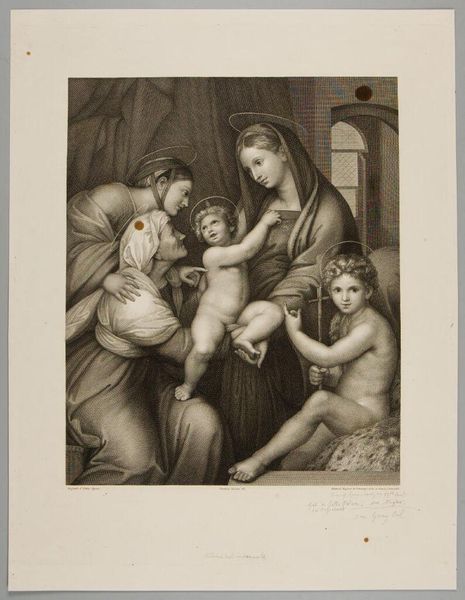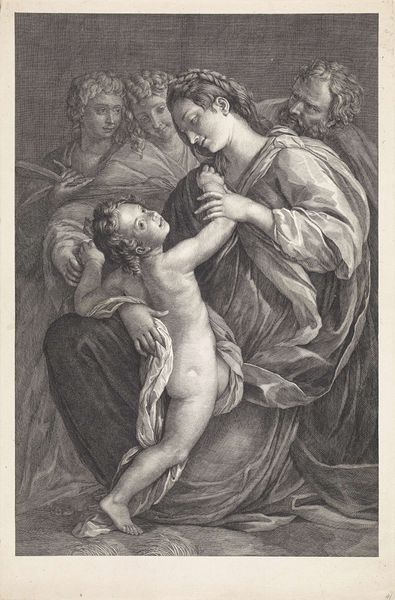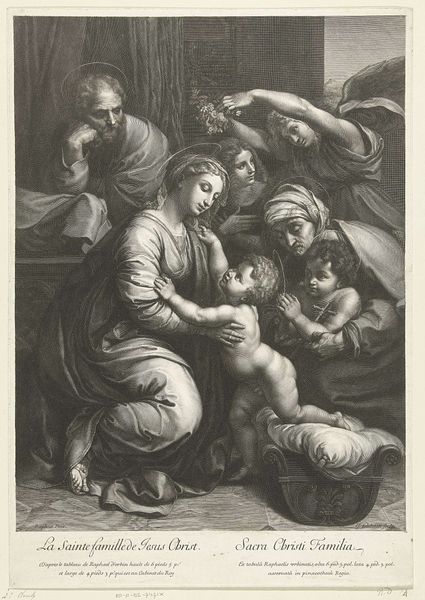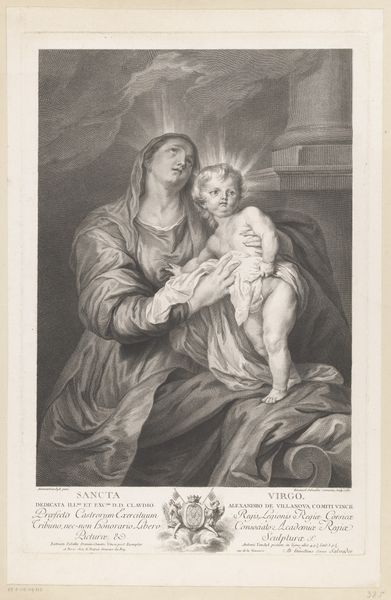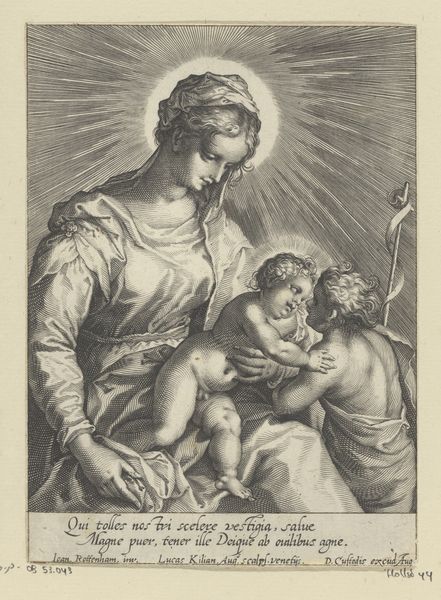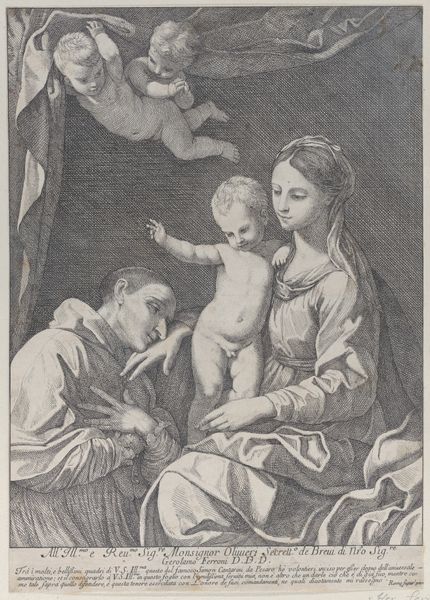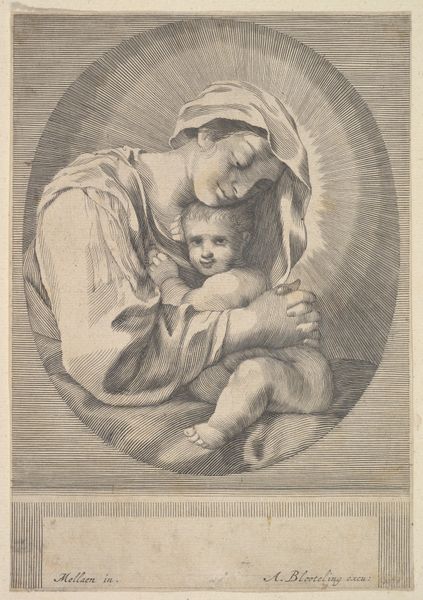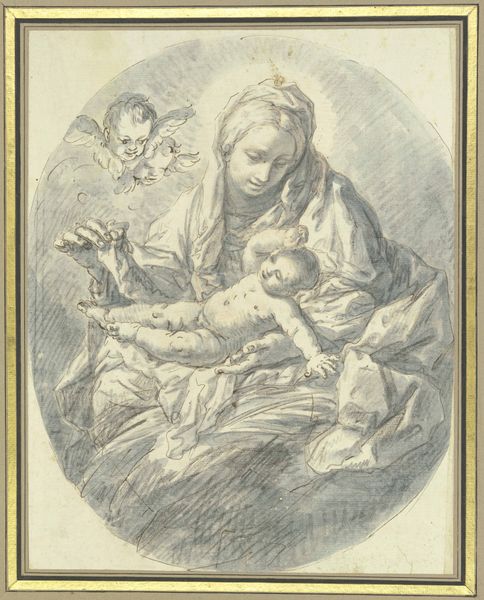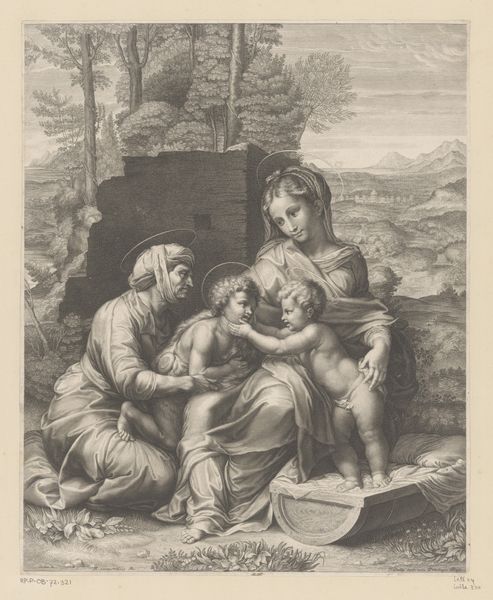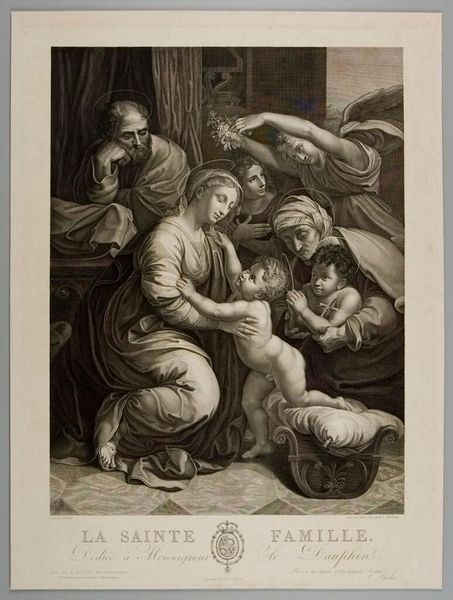
print, engraving
# print
#
old engraving style
#
caricature
#
portrait reference
#
group-portraits
#
portrait drawing
#
history-painting
#
italian-renaissance
#
engraving
Dimensions: height 428 mm, width 298 mm
Copyright: Rijks Museum: Open Domain
Curator: My first impression is of delicacy; it’s fragile and very carefully constructed. Editor: Let’s take a closer look. This engraving from 1602 by Francesco Villamena depicts Mary with Child and Elizabeth, Catherine, and John the Baptist. The print is an intriguing snapshot into the visual culture of the Italian Renaissance. Curator: What I find fascinating are the lines. The way they articulate volume is very skilled. There’s a real sensitivity to texture in the rendering of drapery. Tell me, how did such prints circulate at the time? Were they luxury items? Editor: Prints such as these played a vital role in disseminating artistic ideas across Europe. Think of them as an early form of mass media. This print likely served as both a devotional object and a means of promoting artistic innovation beyond the elite circles of patronage. Curator: It also acts almost like a document. I’m very struck by how this scene presents particular attitudes to production. The care put into it makes it more than mere decoration; it shows dedication of craftsmanship. You can sense the value it has in terms of labor. Editor: Precisely, and these prints frequently mirrored or alluded to the styles of famous painters. In doing so, they allowed the emerging middle classes a relatively affordable route to engage in culture that would otherwise have been the sole preserve of the aristocracy. Curator: Yes, looking at the composition I'm starting to see visual and ideological dialogues around art and its societal value. It makes me question what this print signified for its original audience – it may have been as a form of social currency too. Editor: Ultimately, what resonates is the image's complex position within the broader history of artistic and cultural dissemination. How artistic tastes spread and gained prestige! Curator: The printmaking shows such great dedication to conveying value via materials. I see this dialogue now – I have found more ways to perceive its making as communicating power, and, really, dedication. Editor: For me, it reveals how the artwork takes up this key role in mediating visual language of devotional themes for the burgeoning print market, beyond just painting.
Comments
No comments
Be the first to comment and join the conversation on the ultimate creative platform.
